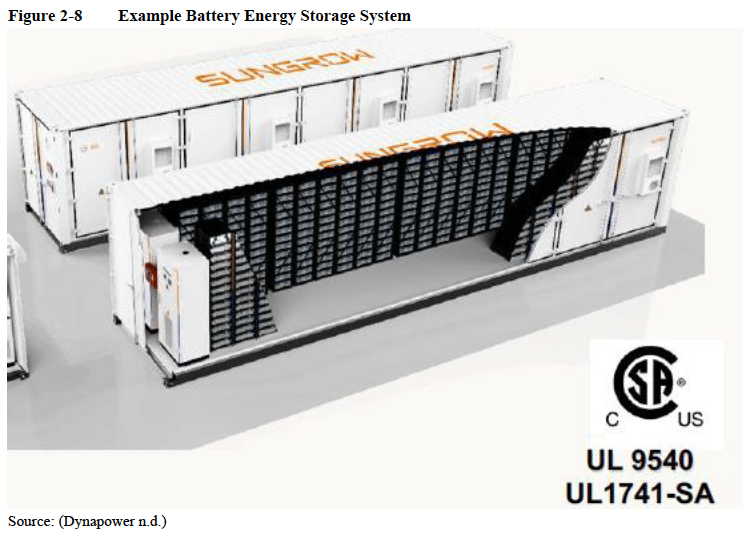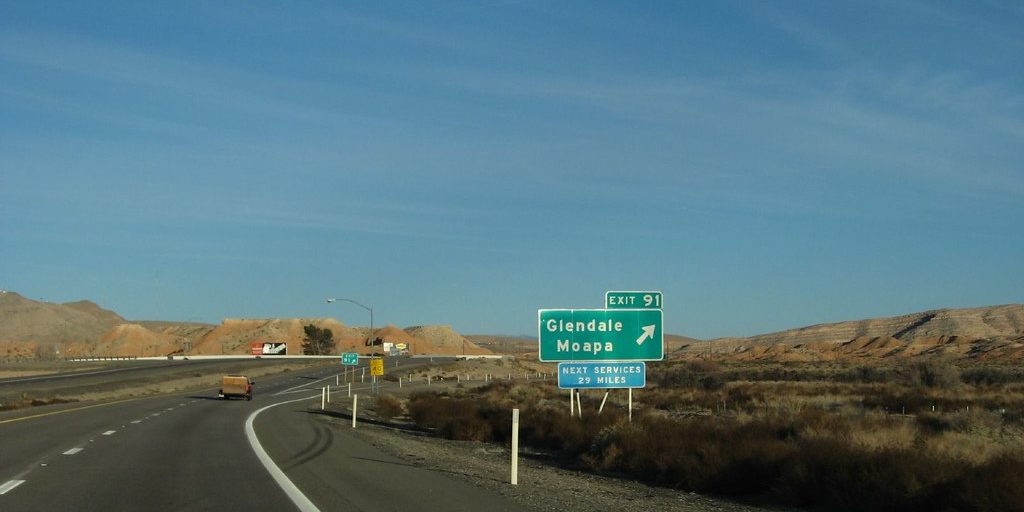Last week, one of the largest solar and battery projects in the world just got one step closer to approval. On Friday the Bureau of Land Management (BLM) released the draft environmental impact statement (EIS) for the colossal Gemini Solar Project, a behemoth planned for 11 square miles of the Nevada desert northeast of Las Vegas off Interstate 15.
The paperwork shows few exact details of the project, and it appears that the developers are not even sure if they will use standard or bifacial solar panels. However, buried in the description is a casual mention that there has been an upgrade to the scale of the battery storage component, with a mammoth 531 MW / 2125 megawatt-hour (MWh) battery planned accompany the 690 MWac of solar that will be deployed. As stated in the draft EIS:

This would make it the largest battery system known to pv magazine; larger even than the 409 MW / 900 MWh battery that Florida Power and Light is planning, or the 495 MW battery that is planned as part of the Juno Solar project in West Texas – neither of which have yet been installed.
Details of the battery system are also sparse. While a graphic to illustrate this system shows a Sungrow battery system, the developer does not appear to have made the final decision as to technology, with the EIS stating that the technology “may be” lithium ion.

One of the few decisions as to procurement which appears to have been made is that the developer plans to utilize a single-axis tracking system.
Many cooks
It’s not clear exactly who the developer is for the Gemini Solar project, and which of the companies involved are playing what role.
The site of the project was originally chosen by concentrating solar power (CSP) developer BrightSource Energy for the APEX Solar Energy Generating Systems. BrightSource appears to have sold off the project in 2017 along with the Solar Partners XI, LLC, the company that is on the paperwork as building Gemini Solar.
Quinbrook had earlier been named as the developer by Bloomberg, but the company’s areas of expertise appear to include renewable energy investment as well as development, construction and other services. Meanwhile Solar Partners XI is currently a subsidiary of Valley of Fire, LLC, which was registered in Wyoming in 2016. Further complicating the matter of roles, Arevia is listed as serving as the development manager for the project, and the BLM press release states that Solar Partners XI (Arevia) is developing the project.
This looks to be much bigger than anything that Arevia has developed to date; BLM documents from last July show Arevia as having only built 200 MW of solar at that time.
All of the above
The publication of the draft EIS now opens a 90-day comment period, which will end on September 5, and will include a series of public meetings. And while President Trump has made public comments dismissing the significance of solar and his administration has openly favored fossil fuels, this does not mean that the Trump Interior Department necessarily plans to put any roadblocks in the way.
If anything, the Trump Administration could be more characterized as being anti-regulation than opposed to development of any particular energy source, and this was referenced by the local manager for the BLM.
“The BLM actively supports the Department of the Interior’s America First Energy Plan, an “all of the above” strategy which supports energy development on public lands,” stated Tim Smith, manager for the BLM’s Southern Nevada district.
Assuming it can get all the approvals in time, the developer plans to begin construction in October 2019, and could complete the first phase in 2021, with the remainder of the project planned to come online in 2022 or 2023. Construction is expected to employ up to 900 workers at any give time.
This content is protected by copyright and may not be reused. If you want to cooperate with us and would like to reuse some of our content, please contact: editors@pv-magazine.com.










Really should be putting those batteries underground in the desert. Save megawatts in cooling.
Look up the Surprise Arizona fire and explosion of one of the energy storage cubicles at the MCMiken switching plant on 4/19/19. It’s hard enough for first responders to navigate a hazardous scene, putting it underground only compounds the area as a confined space.
With a proposed 425 5MW storage cubicles for this project, it might be a better choice of a redox flow battery technology. Something like UET Inc. is now installing in China for utility arbitrage of solar PV and wind generation. It has become the current trend of going out to bid for these large scale projects. I imagine those who want this magnitude of generation and storage will find a least cost solution overall.
What an awesome project! Renewables are looking more dispatchable all the time. Interesting configuration of the battery containers being placed adjacent to the inverters. I wonder if they are trying for some resiliency there or maybe efficiencies in cabling etc.
For this kind of big storage solution VRFB in combination with LiOn should be a much better solution AIMO
Can someone please clarify the capacity values. When you say that 690MW is that the peak power output at maximum sunshine? Or is it the average output? How many kwh this actually delivers per day?
Also, I am quite surprised that you can complete this for just $1B. It is not a that big amount really. Sri Lanka, where I am from, can install a couple of these with just one years’ average import cost of petroleum.
Why are batteries required, the Hoover dam is near by. Just shut down the turbines during peak solar hours and increase water release at night. Niagara Falls is similar, they flow more water over the falls during the day and use more at night for power when the tourists aren’t looking. The US has has ten major pumped hydro sites for for energy storage with a total capacity of 14 MW.